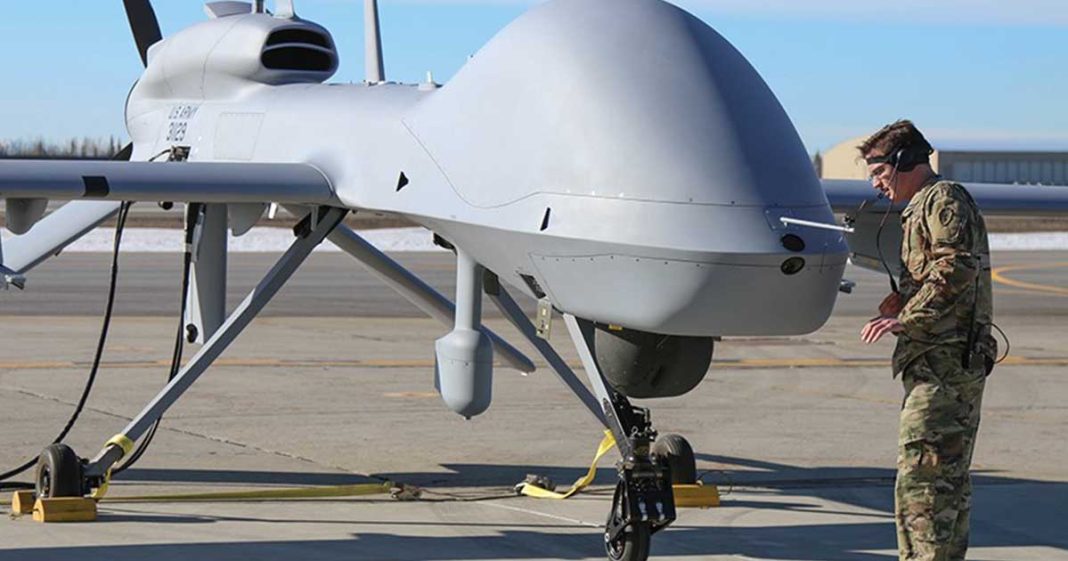The evolution of technology has always played a pivotal role in shaping the nature of warfare. From the invention of the trebuchet in medieval times to the development of tanks and fighter jets in the 20th century, each leap in technology has brought about significant changes in how conflicts are waged. In the modern era, one of the most groundbreaking developments in military technology is the rise of drones, which have introduced a new aspect of warfare that is reshaping strategies, ethics, and the very nature of engagement on the battlefield.
Drones, also known as Unmanned Aerial Vehicles (UAVs), are aircraft operated without a human pilot onboard. They can be controlled remotely by operators from safe distances, reducing the risk to human lives. The development of drone technology gained momentum during the late 20th century, initially for surveillance and reconnaissance purposes. However, the capabilities of drones quickly expanded, encompassing a wide range of applications, including intelligence gathering, target tracking, and even offensive operations.
Read more: Iran unveils advanced drones
Understanding the matter better
The integration of drones into military arsenals has revolutionized traditional warfare strategies. Drones offer unprecedented advantages in terms of flexibility, agility, and persistence. They can loiter over a target area for extended periods, providing real-time intelligence to commanders. This data allows for more informed decision-making, as commanders can assess situations without putting soldiers’ lives at risk.
Having appeared in various conflicts in recent years, notably in Nagorno-Karabakh (2020) or Syria (since 2011), drones have taken on a new dimension since the start of the war in Ukraine, which was triggered by Russia on February 24, 2022. They have gradually established themselves as an essential weapon for both sides. Ukraine and Russia are using drones in a wide assortment of missions in Ukraine, Russia and the Black Sea. While both combatants entered the war with drones, there has been a Cambrian explosion in missions and types of drones over the past 18 months.
Since the start of the Russian invasion, both armies have been using several hundred unmanned aerial vehicles every day. According to a report published on May 19 by the Royal United Services Institute (RUSI), a British think tank specializing in defense issues, the Ukrainian military is now losing some 10,000 drones a month on the battlefield, or more than 300 a day. Recently, on August 30, 2023, the Russian state news agency reported that Ukrainian drones hit an airport near Russia’s border with Estonia and Latvia, causing a huge blaze and damaging four Il-76 military transport planes.
Hence, drones have reshaped the concept of asymmetrical warfare. Smaller and less technologically advanced forces can now pose significant threats to larger, conventional armies. Drones equipped with precision-guided munitions can carry out surgical strikes against high-value targets, eroding the conventional force’s advantages. This dynamic has compelled military thinkers to adapt and develop strategies that can counter or mitigate the drone threat effectively.
Drones have fundamentally changed the nature of engagement in warfare. Traditional battles often involve visible confrontations between soldiers or equipment on the ground, at sea, or in the air. However, drones have introduced a layer of invisibility and unpredictability to conflict. A drone can strike without warning and disappear before retaliation can be initiated. This has led to an increased emphasis on anti-drone technologies and the need for rapid response systems to counter this new form of threat.
Read more: Ukrainian drones downed in Russian territory
The design and software innovations, as well as mass dissemination of piloting know-how, are also likely to influence the way drones are used far beyond the war in Ukraine, with serious implications for governments confronting separatist militias, drug cartels and extremist groups seeking to gain a technological edge.“This is a 24/7 technology race,” Ukrainian Deputy Prime Minister MykhailoFedorov said in an interview at his office in Kyiv, the capital. “The challenge is that every product in every category must be changed daily to gain an advantage.”
As technology continues to advance, the capabilities of drones will likely become even more sophisticated, posing new challenges for international security and diplomacy. Striking a balance between the advantages offered by drone technology and the ethical responsibilities of warfare remains a complex endeavor. It is crucial for governments, international organizations, and scholars to engage in discussions that address these issues and establish norms and regulations for the use of drones in conflict.
In conclusion, the rise of drones as a new aspect of warfare marks a significant turning point in military history. Their impact on strategies, ethics, and the nature of engagement underscores the need for comprehensive and thoughtful approaches to harness their potential while mitigating their potential downsides. As we navigate this new frontier, it is essential to ensure that the lessons of the past guide us in shaping a more secure and ethical future on the battlefield.
The writer is a Research Officer at Strategic Vision Institute, Islamabad. The views expressed in the article are the author’s own and do not reflect the editorial policy of Global Village Space.














